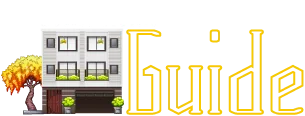Metal protectingbarriers not only augment the aesthetic appeal of your home but also serve vital safety and security functions. Whether you’re considering installing metal railings along staircases, balconies, or protective fences around your property, it’s essential to conduct a thorough cost analysis to ensure a well-informed decision. In this piece, we get into the various factors that contribute to the cost of installing metal railings and protective fences in your home. For people looking for the best Exterior Metal Work bellevue WA, click on this link.
Table of Contents
Material:
The choice of materials significantly impacts the overall cost of metal railings and fences. Common materials include wrought iron, steel, aluminum, and stainless steel, each offering unique benefits in terms of durability, aesthetics, and maintenance requirements. Wrought iron is known for its elegance but tends to be more expensive, while aluminum is lightweight and corrosion-resistant, making it a cost-effective option. Stainless steel combines durability with a modern aesthetic but may have a higher upfront cost.
Labor:
Labor costs for installing metal railings and fences vary depending on factors such as the complexity of the design, site preparation, and installation method. Intricate designs or custom fabrication may require skilled artisans, increasing labor costs. Additionally, factors such as accessibility, site terrain, and local worker rates influence the overall cost of installation.
Design & Customization:
The complexity and customization of the design play a significant role in determining the cost of metal railings and fences. Standard prefabricated designs are generally more cost-effective, while custom designs tailored to your specific preferences may incur higher costs. Factors such as ornamental details, decorative motifs, and intricate patterns contribute to the overall cost of customization.
Linear Feet & Height:
The linear footage and height of the metal railings or fences also impact the cost of installation. Longer linear runs or taller fences require more materials and labour, resulting in higher costs. Additionally, regulations and building codes may dictate minimum height requirements for safety and compliance, influencing the overall cost of the project.
Finishes & Coatings:
Finishes and coatings not only enhance the aesthetic appeal of metal railings and fences but also provide protection against corrosion, rust, and weathering. Powder coating, galvanization, and painting are common finishing options, each with associated costs. High-quality finishes and coatings may incur additional expenses but offer long-term durability and maintenance savings.
Permits & Regulations:
To ensure compliance with local construction standards and regulations, installing metal railings and fences may require getting permits, depending on your region. Permit costs increase the entire cost of installation and vary based on the jurisdiction and project scope. When creating the project budget, it’s critical to account for the cost of permits and regulatory requirements.
In conclusion, installing metal railings and protective fences in your home involves various cost considerations, counting with material& labor costs, design customization, linear footage, finishes, permits, and maintenance requirements. By conducting a detailed cost analysis and working with reputable contractors or fabricators, you can make informed decisions that align with your budget and preferences while ensuring the safety, security, and aesthetic enhancement of your home.










